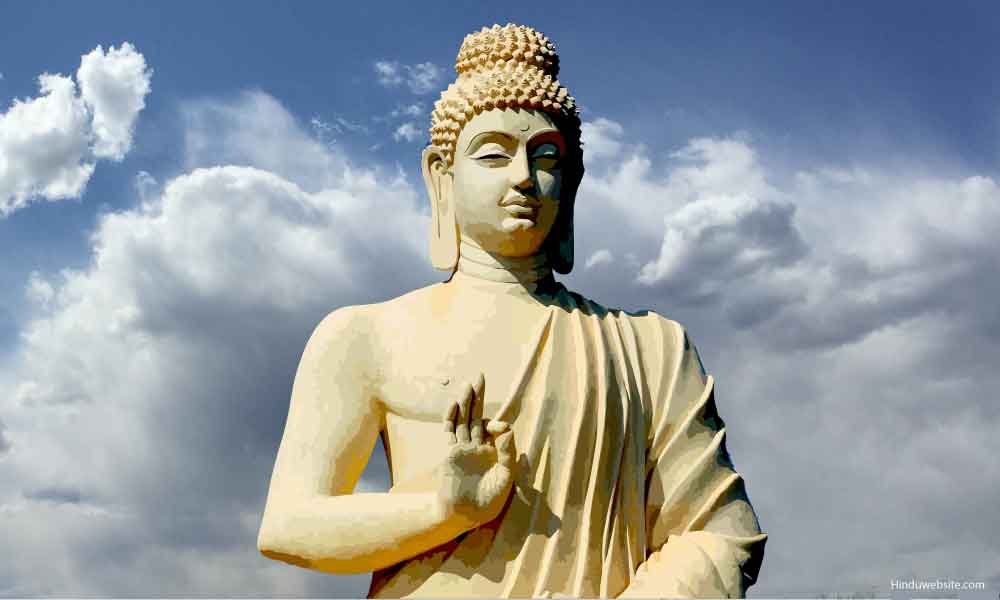Zen Buddhism started in China as a combination of Buddhist religion and Taoist philosophy. The place where Zen Buddhism took strongest root, however, was Japan, where it became hugely popular with the ruling samurai class in the 13th-century because of its emphasis on self-reliance, simplicity and learning from a teacher instead of texts. Over the next four centuries, Zen exerted a pervading influence on all the arts of Japan.
Many scholars have ventured general comparisons of Eastern and Western Art. Daisetz Suzuki suggests that Oriental art depicts spirit, while Western art depicts form. Allan Watts holds that the West sees and depicts nature in terms of man-made symmetries and super-imposed forms, squeezing nature to fit his own ideas, while the East accepts the object as is, and presents it for what it is, not what the artist thinks it means.
The Zen artist tries to suggest by the simplest possible means the inherent nature of the aesthetic object. Anything may be painted, or expressed in poetry, and any sounds may become music. The job of the artist is to suggest the essence, the eternal qualities of the object, which is in itself a work of natural art before the artist arrives on the scene. In order to achieve this, the artist must fully understand the inner nature of the aesthetic object, its Buddha nature. The technique, though important, is useless without it; and the actual execution of the art-work may be startlingly spontaneous, once the artist has comprehended the essence of his subject.
Painting
The art form most strongly associated with Zen Buddhism is ink painting, called sumi-e in Japan. As with everything else in a Zen monk’s life, painting was the result of meditation on the essence of the subject, whether religious or secular in nature. Because of this, Zen painters tended to be unconcerned with giving the illusion of realism. Instead, the subject was painted with a few lines forcefully and economically rendered by a single horsehair brush and ink on either silk or paper. Zen painting does not try to create the illusion of reality. It abandons true to life perspective, and works with artificial space relations which make one think beyond reality into the essence of reality.
Modern Art
Starting in the 19th century with the opening of Japan to the West, Japanese art has exerted a strong influence on European and American artists, particularly 20th-century modern art. Although modern artists such as Joan Miró and Jackson Pollock were not Zen Buddhists, and therefore their work cannot properly be classified as “Zen;” their pieces do share important philosophical elements with Zen Buddhism. These and other artists focused on gestural brush strokes or simple forms and used their art as a form of meditation, seeking to represent the essence of the subject rather than create a realistic representation.
Drama
In Japanese No drama, a Zen-inspired form, the gestures have been abstracted by simplification, rather than imagination. The barest possible means are employed. No is a drama. It is not reality, nor does it attempt the illusion of reality: rather, it suggests reality in its essence. If completely imaginative gestures were used, one would be impressed with the skill of the performer in conjuring up before our eyes invisible drums or boats or swords. Our thoughts would be bound up in the intricacies of technique, rather than free to comprehend the underlying eternal truth. No depicts the essence of reality, that which is eternal, the Buddha nature in its general and particular forms.
In the other type of drama, the kabuki, the aesthetic demands utmost imitation and dramatization of reality. Revolving stages and painted sets reproduce to the letter any city or country scene (and occasionally even ocean scenes). When a drum is to be beaten in kabuki, a real drum is really beaten. The overly dramatic quality of kabuki is most unZen, perhaps even antiZen. Today kabuki is vastly popular with all classes of people in Japan, but No remains an aristocratic, highly specialized art, inaccessible to most of the population.
Poetry
The haiku, as developed by Basho, and to a lesser extent by Issa, was couched in the popular idiom and avoided literary sounding phrases. The aesthetic of haiku is not far removed from that of sumi e or no. The basic principle is still: the most of the essence with the least possible means. One must work within only a few syllables, and eschew the high-flown dramatic language typical of other genres.
Music
The Japanese have long been aware of the sounds of nature and have identified these with music. Also, sound exists in opposition to silence, and music must reflect this basic fact. Sounds take their being from silence and return to it. The inner nature of sound seems to be connected in some mysterious fashion to its transitory character. There is also in sound a sense of continual change, a “becoming,” an inexorable leading from tone to tone and finally back into silence.
Zen music refuses to establish fixed pitch levels as building blocks (like the western music), rather connects sounds together which are continually becoming one another, coalescing. From these sounds, longer melody lines are developed, but there is never a sense of architectonic structure, always a free movement from idea to idea.
Gardens
Japanese stone gardens, or karesansui — roughly translated as “dry mountain water” — grew out of the Zen monk lifestyle. To Zen monks, every day tasks were a form of meditation, and stone gardens were valued because they required constant vigilance and maintenance: pulling weeds, raking gravel and grooming plants to keep the garden pristine. After the Chinese introduced miniature trees, known in Japan as “bonsai,” these were added to the gardens along with rocks to imitate landscape paintings. In contemporary Japan, these gardens continue to be a form of high art and a focus of meditation.
Tea Ceremony
The Japanese tea ceremony, or chanoyu, is one of the most emblematic arts of Japan and embodies the Zen practice of using every day tasks as a vehicle for meditation in the brewing, serving and drinking of the tea, as well as the Zen aesthetic of rustic simplicity in the implements of the tea ceremony and the design of the Japanese tea house. The basic elements of the Japanese tea ceremony — grinding the tea leaves before adding hot water, then mixing with a bamboo whisk — were first established by Myoan Eisai, the founder of Zen Buddhism in Japan, who believed tea could serve both a religious and a medicinal purpose.
PHOTO CREDIT : metmuseum




